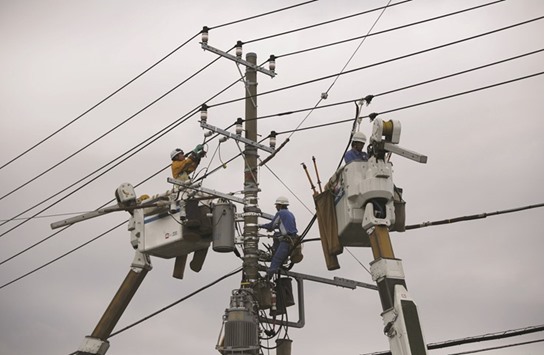Four weeks into Japan’s power market shakeup aimed at boosting choice and energy security, the utility at the centre of the 2011 nuclear crisis has borne the brunt of consumer defections, with nearly 470,000 users switching electricity providers.
The move underscores the anger at Tokyo Electric Power (Tepco), operator of the wrecked Fukushima power station, but has helped provide a solid start for the government’s efforts to spur competition in its power sector.
Japan’s reforms mark the biggest liberalisation since Germany’s over a decade ago. Their ultimate success, however, will depend on avoiding some of the pitfalls that still dog the German power market including high retail prices, weakened former state utilities, and high use of coal.
Sparked by the 2011 earthquake and tsunami which highlighted problems in transferring electricity across regions and led to the shutdown of nuclear reactors, the reforms are part of Prime Minister Shinzo Abe’s plans to boost an economy in the doldrums.
From April 1, the government ended regional monopolies that were formed after World War Two, opening up retail gas and electricity markets to competition. It hopes the changes will help create a thriving wholesale market, driving down prices for industrial and retail customers alike.
In the first month of the new marketplace, more than 740,000 Japanese retail electricity users switched to new suppliers, according to the national grid monitor OCCTO, and wholesale trading volumes on the Japan Electric Power Exchange (JEPX) surged, albeit from a tiny base.
“The number of customers switching is encouraging and the pick-up in JEPX activity levels is also welcome news as building capacity in the wholesale market will be key to ensuring success in liberalised markets,” said Tom O’Sullivan of energy consultancy Mathyos Japan.
However, Japan needs to avoid the problems that beset Germany’s liberalisation, particularly a collapse in wholesale power prices due to a flood of subsidised green energy that gutted its big utilities.
“They are very cognizant of what has happened in Germany. They have been in there, they met government officials and industry practitioners,” O’Sullivan said. “I think the chances of success are 50/50 at this stage.”
Japan and Germany’s power markets share many similarities – declining demand, subsidies for renewable energy, a dormant or declining nuclear sector, and energy-intensive industries.
Germany’s experience, however, has reaped mixed results. Huge subsidies mean renewable energy sources account for nearly a third of the power mix, but the capacity glut has cut wholesale prices by 70% since 2008. This drove down costs for the country’s chemical, automobile and other industries, but slashed revenues for major utilities.
Smaller businesses and households, however, have been hit with steep retail costs in order to finance renewable subsidies, while industry enjoys a raft of exemptions. Japan, too, has posted explosive growth in subsidised renewable energy, particularly solar, since preferential rates were introduced in 2012. Solar now meets as much as 10% of power demand.
Critics say subsidies must be rolled back fast to avoid the creation of a renewables capacity glut that erodes wholesale power prices and, with it, revenues for conventional power plant operators.
“When renewables are 3% of the power mix, they need support payments, but when they reach 20%, you have to make the change towards supporting capacity only by competitive means,” Peter Reitz, chief executive of Germany’s EEX , told Reuters.
In Germany, renewable subsidies, taxes and other government levies accounted for 54% of retail power prices last year, and within that supporting feed-in tariffs was the biggest single item totalling €24bn ($27bn).
In Japan, government sanctioned preferential rates for renewable energy supplies added about ¥1.3tn ($11.7bn) to electricity bills in the year through March, double the year earlier, according to the industry
ministry.

Men work around an electric pole in Urayasu, Tokyo. Four weeks into Japan’s power market shakeup aimed at boosting choice and energy security, the utility at the centre of the 2011 nuclear crisis has borne the brunt of consumer defections, with nearly 470,000 users switching electricity providers.


